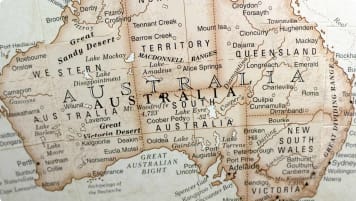Esperance and Wildflowers
The historic town of Esperance amongst wildflower enthusiasts is a must see. Each spring the town and the surrounding South West eco-region is filled with bursting colour overtaken by blooming wildflowers.
27 Apr 20 · 6 mins read

Esperance and Wildflowers
Esperance is a town located in the Goldfields-Esperance region of Western Australia on the Southern Ocean coastline approximately 720 kilometres east-southeast of Perth. Amongst wildflower enthusiasts it is famous. Each spring the town and the surrounding South West eco-region is filled with bursting colour overtaken by blooming wildflowers.
Coinciding with the annual Esperance wildflower festival, the wildflower season peaks each year during September and October. This is the best time to travel along the Esperance Wildflower Trail to spot a diverse range of flowers spotted along some of Western Australia’s most spectacular rural and coastal scenery. Highlights include the Dempster Head Walk Trail, Cape le Grand National Park, Helms Arboretum, and Fitzgerald National Park.
Odyssey Traveller conducts a tour of Esperance and wildflowers as part of our 16 day guided wildflowers tour of Western Australia. We stay in Esperance for two nights, exploring surrounding areas, before following the coast onto Albany and back to Perth City. This part of the tour is expected to be a highlight for wildflower enthusiasts as we see many endemic wildflowers unique to this part of Australia.
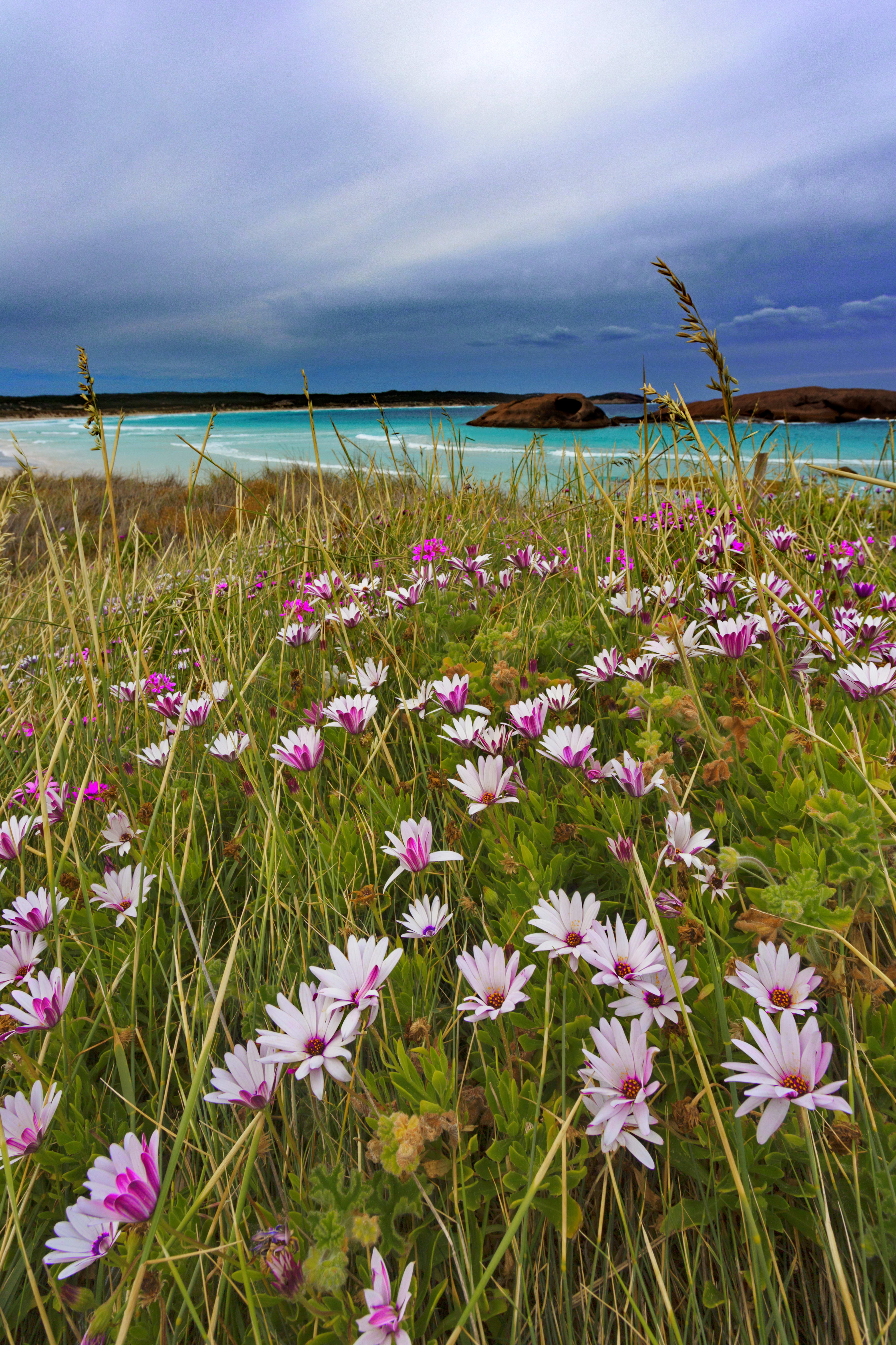
Home to the Wudjari Aboriginal people for thousands of years, the town of Esperance was first encountered by Europeans in 1792 when the French captains Bruni d’Entrecasteaux and Huon de Kermadec were searching the Australian coast for the missing French explorer Jean François de Galaup, comte de Lapérouse. Lapérouse had arrived in Botany Bay on 24 January 1788 (just six days after the First Fleet!), stayed with the British colony for a while, then had gotten lost on his return journey from New South Wales to France, in an incident which shook France.
The French captains named the area after the Espérance, one of d’Entrecasteaux’s ships, whose name meant ‘hope’.
The area was first settled in the 1860s, and became prosperous 30 years later, as a port of entrance for the goldfields of Kalgoorlie and Coolgardie. In 1897, Esperance had four hotels, a brewery, and two newspapers – but the good times were fleeting, thanks to the opening of the Perth-Kalgoorlie railway in 1896, meaning that goods had no need to transit through Esperance.
In the early 20th century, wheat farming was attempted in the arid mallee landscape surrounding the town, but it collapsed during the Great Depression. From 500 farms, the total reduced to 25; 16,000 tonnes of wheat export dropped to 3000 five years later.
However, things would change in 1949. The Esperance Downs Research Station discovered that the sandplain could be transformed into productive land with the addition of phosphate and trace elements such as copper and zinc. What followed was a bonanza for Western Australia’s south coast, driven by American investor Allen Chase, who was granted more than 8000 square kilometres of sandplain country in 1956.
Chase sold the land to American businessmen and entertainers, including the TV host Art Linkletter; Henry Luce III, the heir to Time magazine; and the millionaire businessman David Rockefeller (yes, of that Rockefeller family). Known as the Hollywood Pioneers, they brought celebrities with them, including TV news anchor Walter Cronkite (known as ‘the most trusted man in America’) and Beatle George Harrison.
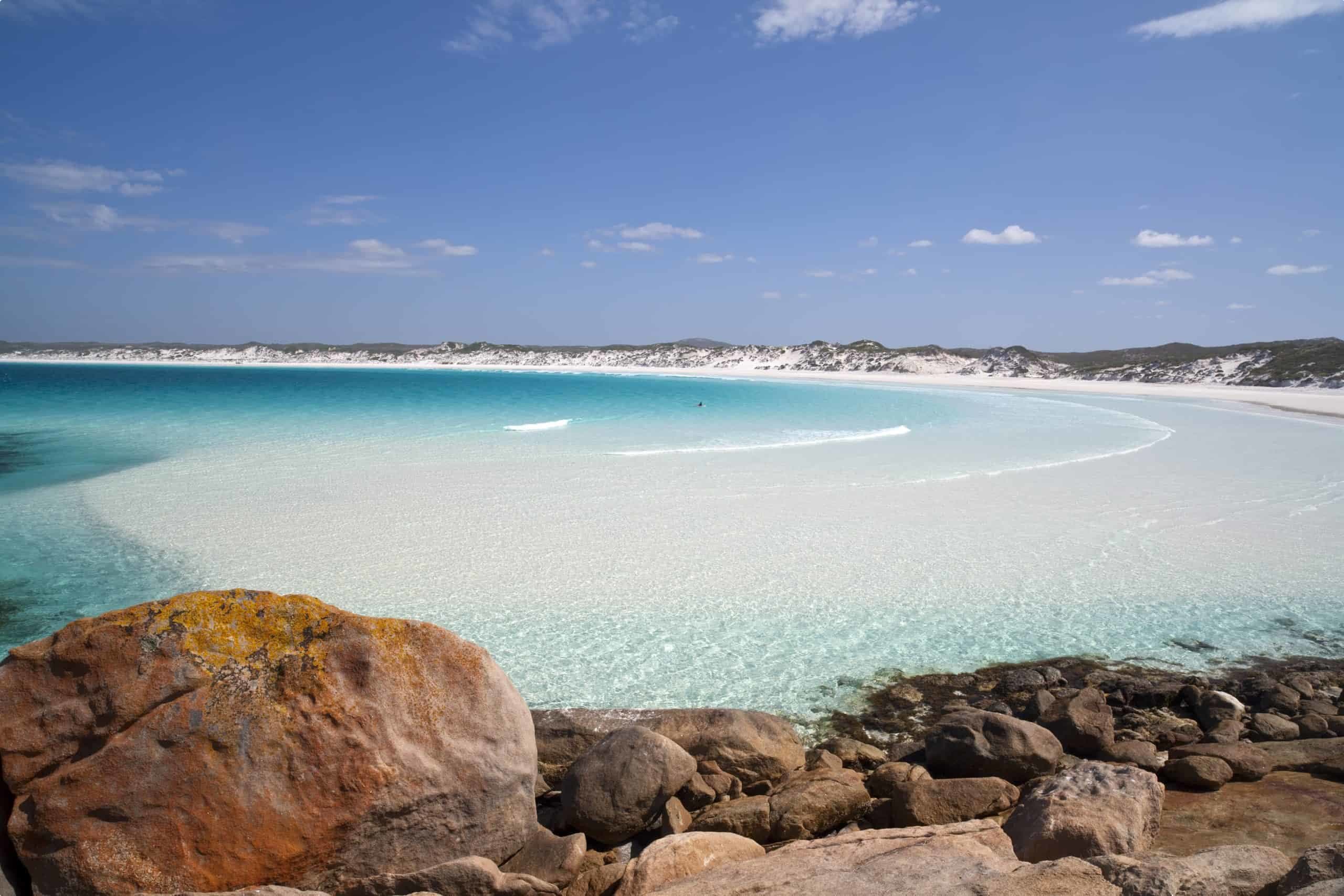
However, Esperance’s brush with global celebrity was not due to the Hollywood Pioneers. On 11 July 1979, the US space station Skylab – the country’s first manned space station – plummeted to the earth, raining debris across the town and surrounding area, and leaving a firey trail through the sky.
Luckily, no person or property was hurt, but the incident made sleepy Esperance internationally famous. President Jimmy Carter telephoned the Balladonia Roadhouse to personally apologise to the mayor for the close call. Reporters from around the world rang the shire in the middle of the night. The Esperance shire fined the USA $400 for littering – which remains unpaid to this day!
For seventeen-year-old Esperance resident Stan Thornton the incident would prove a boon: he was awarded US$10, 000 for delivering a piece of the station to a San Francisco newspaper.
Today, Esperance is a laid-back seaside resort of around 13, 000 people, drawing visitors to the pristine beaches and celebrated wildflowers of the town. One of the windiest places in Western Australia, it is also home to Australia’s first commercial wind farm – look for the fifteen turbines turning on the outskirts of town.
In the water, keep an eye out for fur seals, Australian sea lions and southern right whales, which swim around the coast!
South West Eco-Region – a Global Biodiversity Hotspot
The extraordinary variety of plant and wildflower species and the habitat threats to their survival qualify the South West Eco-region as one of the world’s 36 Global Biodiversity Hotspots. Western Australian wildflowers of the South West evolved over millennia, surviving changing climatic conditions and natural disasters, adapting to every ecological niche for us to observe today.
For example over 60 species of Banksia have been recorded in the south west and only one of these grows naturally elsewhere. Eighty per cent of the 8000+ species found in the South West can’t be found anywhere else on earth, making this section of this wildflower tour truly unique.
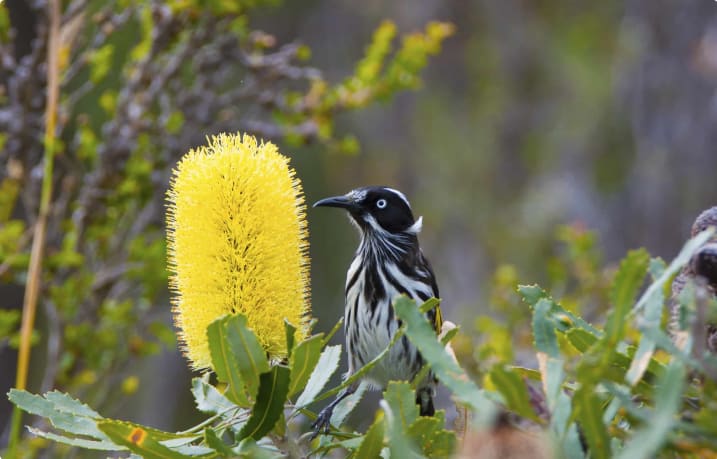
Dempster Head Walk Trail
At Esperance you can experience spectacular views of the town and bay wandering along the relatively gentle walking trail along Dempster Head. During spring there are several species of flowering eucalypt, dryandras, banksias, twining clematis, Australian bluebells, and fringe lilies to spot long your walk. Be sure to make it to Rotary Lookout at the top of the hill for an unbeatable panorama.
Cape le Grand National Park
Cape le Grand National Park, perhaps better known as the home of +the most pristine beaches in Australia, is also well worth a visit for the wildflower season. Just 50km east of Esperance, the park offers a wildflower trail that will take you through the beautiful wildflower country and link to many of the most spectacular coastal sections. During spring various wildflower species are readily seen bursting into colour including the showy banksia, native grass trees, kangaroo paws, grevilleas, and the stunning orange flowers of the WA Christmas Tree (Nuytsia floribunda).
Look out for Cape le Grand’s population of kangaroos, famously unfussy eaters who will nibble on seaweed, fish, and the roadkill of other kangaroos.
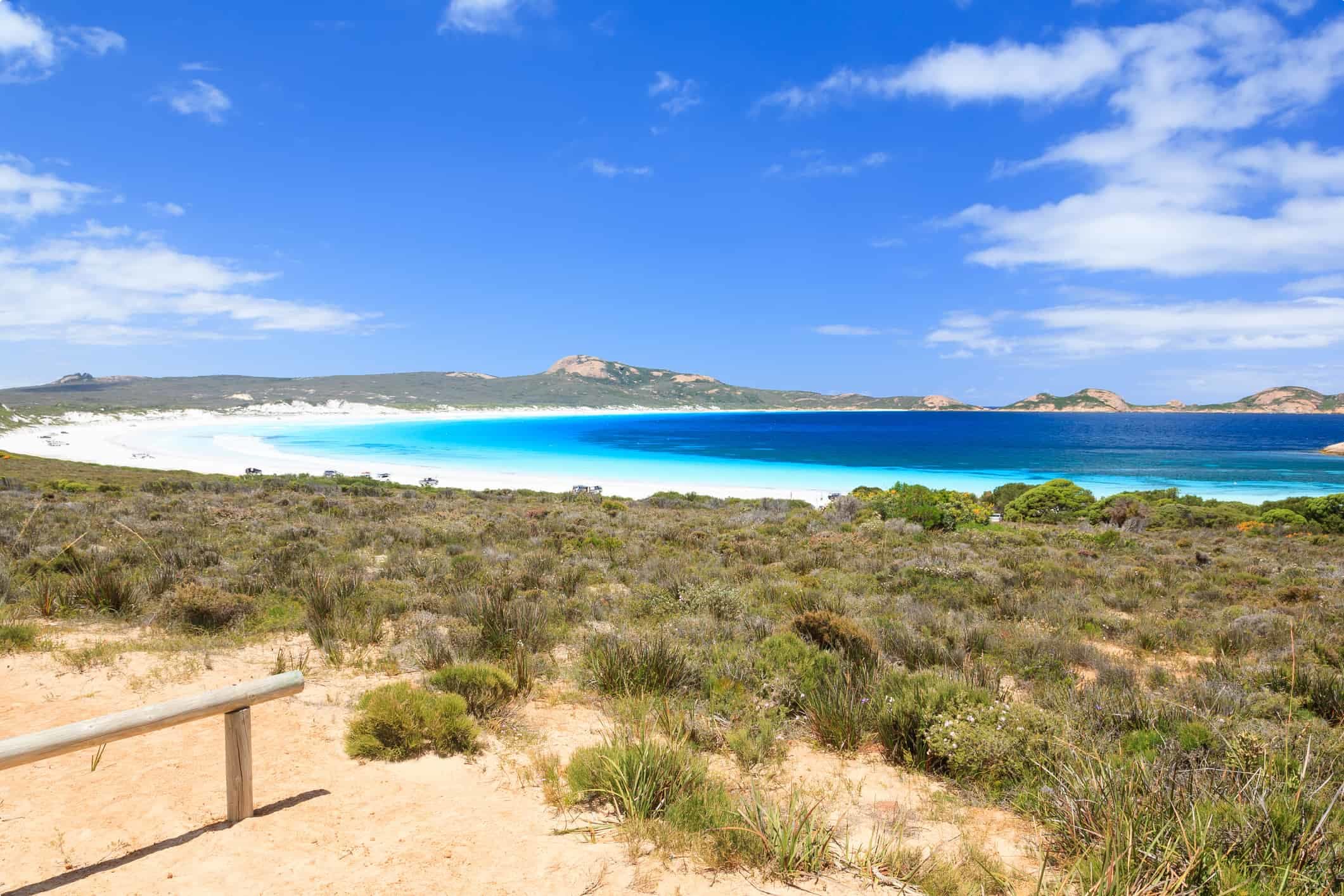
Helms Arboretum
Our next stop on this wildflowers tour of Western Australia is Helms Arboretum – a gigantic reserve with large expanses of natural bushland accessible by gravel roads – just 17km north of Esperance. Within Helms Arboretum are hundreds of plantations containing eucalyptus, melaleucas, casuarinas, acacias, and many exotic pines. During wildflower season, you’ll be able to spot spider orchids, cowslips, and leschenaultia, enamel and donkey orchids, plus banksia. Ken Mills, a local botanist, also recommends driving past the plantation in the arboretum through to the heathland at the back where there are also many wildflowers to be spotted.
Fitzgerald River National Park
The next stop on our trip from Esperance to Albany is a must-see for every wildflower enthusiast. The Fitzgerald River National Park is recognised as one of the most botanically diverse regions on earth with nearly 20% of Western Australia’s flora species found here – many of which are found nowhere else in the world! All up that’s around 1,800 species of flowering plants alone including banksias, hakeas, bottlebrush, feather flowers, Qualup bell and many others.

Wildflower Tour of Western Australia
You can visit Esperance as part of our guided 16 day wildflower tour of Western Australia. Our tour is designed especially for mature and senior travellers. Led by a tour guide chosen for their local knowledge, we move in small groups of around 6-12 like-minded people.
Odyssey Traveller has been serving global travellers since 1983 with educational tours of the history, culture, and architecture of our destinations. Tours are cost inclusive of all entrances, tipping and majority of meals. For more information, click here, and head to this page to make a booking.
Articles about Australia published by Odyssey Traveller:
For all the articles Odyssey Traveller has published for mature aged and senior travellers, click through on this link.
External articles to assist you on your visit to Western Australia:
Related Tours
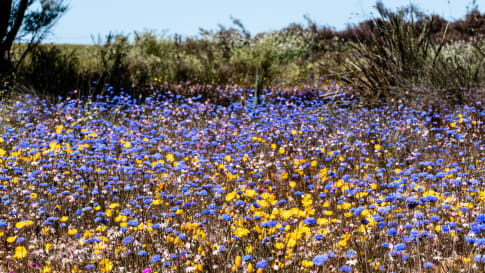
15 days
Aug, SepWildflowers tour of Western Australia
Visiting Western Australia
Escorted small group tour for senior and mature travellers as a couple of solo traveller. Upto 12 people of WA's Wildflower regions including Esperance and the Fitzgerald river National park. Local guides and program leader share knowledge about this fascinating region whilst in bloom.
From A$12,250 AUD
View Tour
